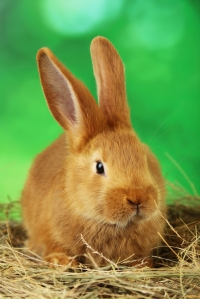 If you have a rabbit, the number one thing to be mindful of is that your rabbit gets enough FIBER in his or her diet. Most of this should come from fresh, thoroughly-washed leafy vegetables – such as romaine lettuce, parsley, cilantro and other greens. (See some great information on rabbit nutrition as well as other rabbit care topics on the House Rabbit Society website at http://rabbit.org/suggested-vegetables-and-fruits-for-a-rabbit-diet/
If you have a rabbit, the number one thing to be mindful of is that your rabbit gets enough FIBER in his or her diet. Most of this should come from fresh, thoroughly-washed leafy vegetables – such as romaine lettuce, parsley, cilantro and other greens. (See some great information on rabbit nutrition as well as other rabbit care topics on the House Rabbit Society website at http://rabbit.org/suggested-vegetables-and-fruits-for-a-rabbit-diet/
But it’s also important to supplement fresh greens with HAY to aid healthy digestion and stool production. Include TIMOTHY HAY in your rabbit’s diet as a good source of fiber. One supplier of Timothy hay is Oxbow Animal Health. Timothy hay should be provided to your rabbit in unlimited quantities daily. Chewing hay will also help with natural wearing of your rabbit’s teeth. (See my past blog on Rabbits need to chew to avoid dental problem.)
Rabbits that lack sufficient fiber are prone to a condition called GI stasis, a potentially deadly condition in which stool production slows down or stops completely. Sufficient fiber – including Timothy hay – can help prevent this condition.
Should you notice your rabbit not eating, or is producing diminished or no stools, see your veterinarian* immediately. GI stasis can be extremely painful and can cause death in a rabbit sometimes in a matter of hours.
*IMPORTANT NOTE: Do NOT assume that the same veterinarian who you take other pets to will care for your rabbit. Not all veterinarians see rabbits. Therefore, it’s best to find a good vet for your bunny BEFORE you need one – and also to schedule annual wellness exams.
AS ALWAYS, CONSULT WITH YOUR VETERINARIAN ABOUT YOUR PET’S OVERALL HEALTH AND WELLBEING.
Follow this blog by email and get email coupons for frequently used pet foods and supplies. Enter your email address in the right sidebar. Allow one to two weeks for your coupons to begin.
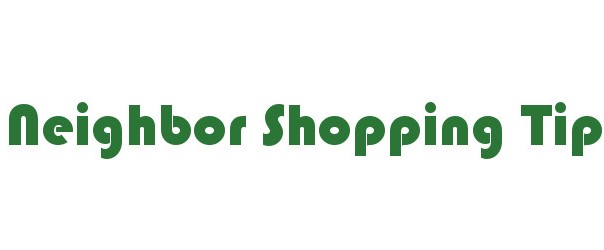
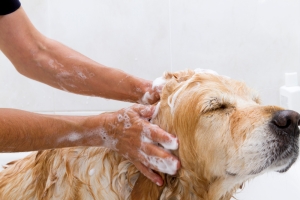 While bathing your dog – or cat – keeps them clean and helps keeps their fur soft and shiny, too much bathing removes essential oils and can lead to dry skin, itching and flaking. Some pet owners make the mistake of thinking that bathing will remove dry itchy flakes. In fact, it does just the opposite and will make the problem worse.
While bathing your dog – or cat – keeps them clean and helps keeps their fur soft and shiny, too much bathing removes essential oils and can lead to dry skin, itching and flaking. Some pet owners make the mistake of thinking that bathing will remove dry itchy flakes. In fact, it does just the opposite and will make the problem worse.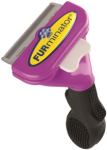
 Yet another grooming tool for removing undercoat is the Undercoat Rake. This tool, at about $20, works well for dogs with long, thick fur.
Yet another grooming tool for removing undercoat is the Undercoat Rake. This tool, at about $20, works well for dogs with long, thick fur.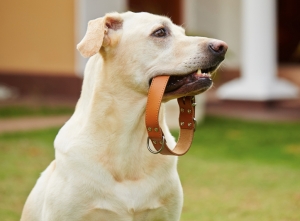
 Pet rabbits are adorable, but need more care than many bunny owners might realize.
Pet rabbits are adorable, but need more care than many bunny owners might realize. All dog owners love the chance to let their dog have a good run and get some exercise. But save any off-leash running for the dog park as letting your dog out of your control just anywhere could result in serious injury or worse.
All dog owners love the chance to let their dog have a good run and get some exercise. But save any off-leash running for the dog park as letting your dog out of your control just anywhere could result in serious injury or worse. KONG toys
KONG toys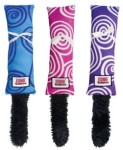
 Rope toys
Rope toys

 A growing number of pet vitamins and supplements are entering the market. While many humans have been quick to use over- the-counter nutritional products, are similar vitamins and supplements a good idea for your pet? Not really – but with some exceptions.
A growing number of pet vitamins and supplements are entering the market. While many humans have been quick to use over- the-counter nutritional products, are similar vitamins and supplements a good idea for your pet? Not really – but with some exceptions. If you are training your dog to walk on a leash, head collars – like the one pictured — are extremely good at getting your dog not to pull.
If you are training your dog to walk on a leash, head collars – like the one pictured — are extremely good at getting your dog not to pull.